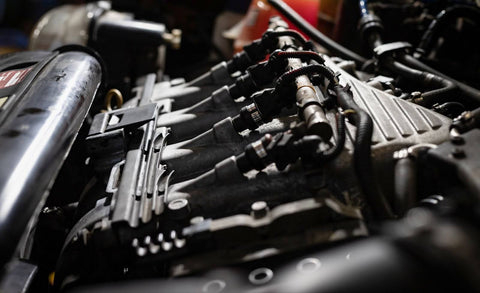Turbochargers are vital components of every vehicle that affect your engine's efficiency. While the main components of the turbocharger are the turbine and compressor, optimizing its efficient performance comes down to the cooling system. As a performance enthusiast, you’ll most likely want to know everything there is to each turbocharger cooling system and maintain it.
In this comprehensive guide, you’ll discover the importance and components of these cooling systems. You can also explore the design considerations and how to maintain and troubleshoot a turbo cooling system.

Components of the Turbocharger Cooling System
Turbochargers operate by converting an adequate amount of air and compressing it before it enters the engine. The air is mixed with fuel to create combustion, thus generating power output.
However, the process of compression and combustion may result in substantial heating. Without effective temperature-lowering methods, the turbo can experience overheating with elevated temperatures, compromising its performance.
So, what cools a turbocharger? Efficient cooling is critical to maintain optimal operating temperatures for turbochargers for sale. Cooling systems prevent overheating and component damage and contribute to peak turbo performance. Essentially, there are three main cooling systems, including:
Intercooler
Intercoolers are mechanical devices that cool the compressed air from the turbo before it enters the engine. Mainly, there are two main types of intercoolers: air-to-air and air-to-water.
While both intercoolers have the same purpose, air-to-air uses chilled air to cool the turbo, whereas air-to-water uses water. These elements help improve the air's density, ensuring a more significant combustion oxygen content.
Coolant system
Coolant systems, also known as antifreeze, protect the engine from overheating using a mixture of ethylene glycol with additive packages and some water. This mixture circulates throughout the turbocharger within this system, absorbing and carrying excess heat generated during operation.
However, this is not the only responsibility of cooling systems, as they also take on the task of lubrication during the process. It greases up the engine’s moving parts, thus protecting the head gasket, water pump, cylinder, and piston timing.
Oil system
The oil can also act as a coolant for engines by drawing heat out of the turbocharger and lubricating the engine’s moving parts. For this cooling option, the oil must flow to prevent overheating, friction, and wear. This enhances turbo performance and lifespan.

Maintenance and Troubleshooting
Maintenance and prompt troubleshooting of turbo cooling systems are vital for your engine's overall health and longevity. These complex systems prevent overheating problems, which can seriously damage your engine. Here are a few cooling system maintenance and troubleshooting tips:
Conclusion
Turbochargers enhance your engine's power output and fuel efficiency. However, its combustion operation increases air intake, releasing extensive heat that may damage its performance.
This is why the turbocharger cooling system maintains proper engine temperature and prevents overheating. The intercooler cools the compressed air, while the coolant uses antifreeze to carry away excess heat, and the oil absorbs heat generated during turbo operation.
Hopefully, this article has provided insightful information on cooling systems and how they work. With the provided tips on maintenance, you can regularly troubleshoot these systems and take cautious measures for optimal turbocharger performance.



